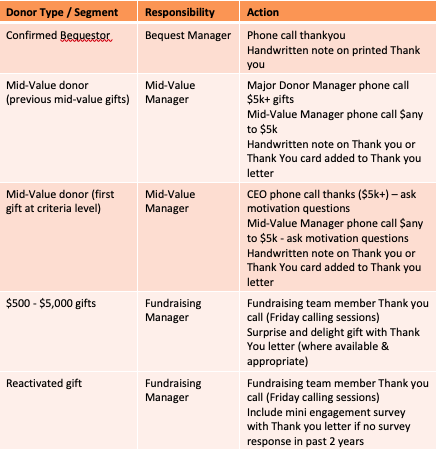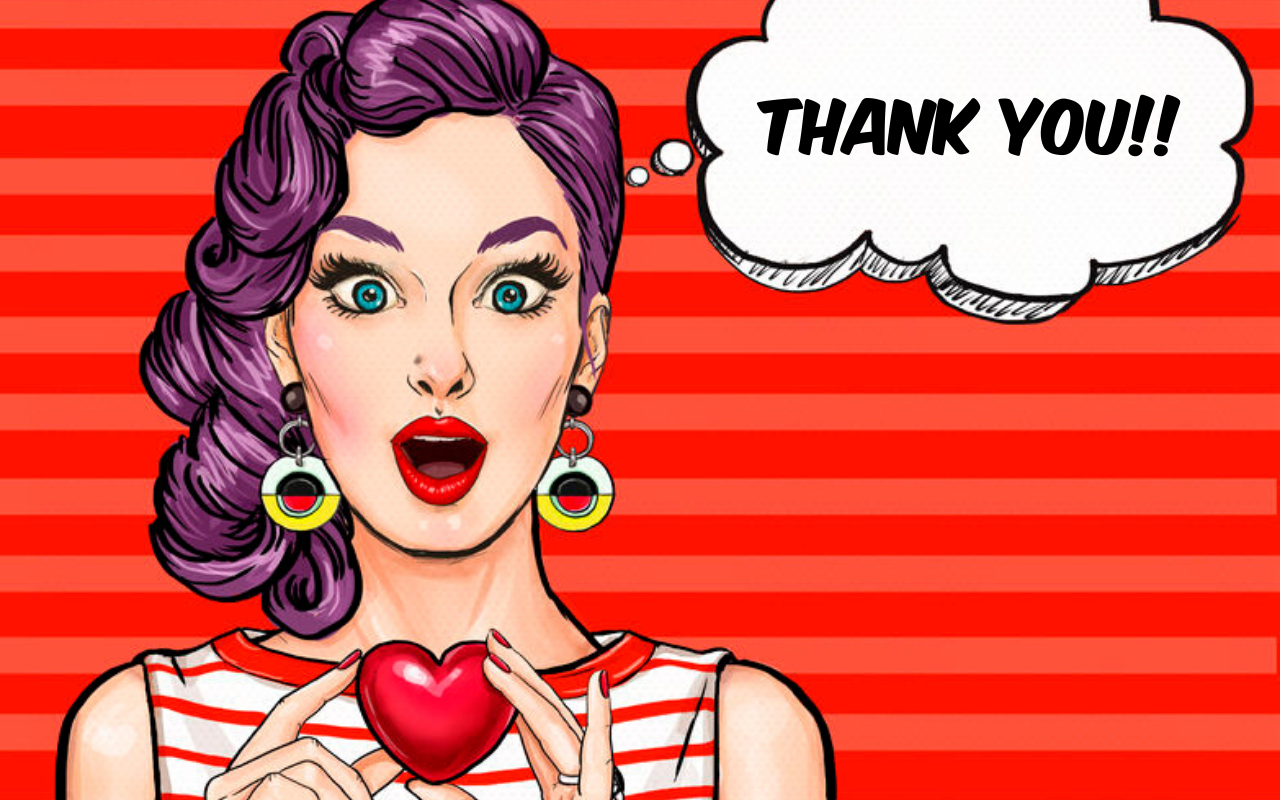For many years I gave to an organisation that organised an annual fun day for children with disabilities. The kids and their caregivers were hosted at a day-long party with activities, games and entertainment accessible to all.
I have no idea how I first ended up giving. But I know that I gave every year, for five years. Each year, a fellow named Mark called me — at work because that was the number I’d provided. He would remind me who he was and where he was from. I always listened because Mark was polite, engaging and reminded me we had spoken before.
Mark would spark my memory by mentioning the details of an annual event for disabled children I had previously supported. Mark would ask if I remember my gift the previous year. And every year I said yes, because after I donated I received a thank you letter and receipt from Mark. This letter was always memorable.
The letter was remarkable in that it defied every single graphic design principal (my designer friends would have called it ugly) and was written exactly like Mark chatted. It was an actual letter from a human. And I loved it.
On the first two sides of the letter Mark recalled the event, how it sounded, what he remembers catching his eye and a description of one child and their caregivers’ experience at the event. Photos taken at the event were clipped randomly onto the final two pages with captions highlighting the joy being had in each and every shot.
Mark said thank you more times in the letter than you think was possible.
Mark would always note the date of our call, how much I had donated and how many children that equated to being able to attend the event.
The letter was memorable. Mark was memorable. The whole experience was memorable. Mark showed me the love. Mark helped me feel wonderful about myself. Mark’s letters always made me smile.
Each year, for five years, I made it possible for one, two or three kids and their carers to have an awesome day out, to have a fun, carefree time they otherwise would not have had. (The run ended at year six because I moved to a different job, and Mark couldn’t find me. I heard, though, that he managed to get my successor in the job to start supporting the event!)
I felt the love.
Mark nailed it.
The following is for those who believe, like Mark, that showing your donors the love is the right thing to do and you are looking for some inspiration.
1. Say thank you every time you interact with donors
Thanking for a donation is obvious. But let me challenge you to take a look at your standard donation thank you letter (maybe you call it your receipt or acknowledgment letter), website donation auto response and standard email donation acknowledgment. Do they use the words THANK YOU? Do they use the word THANK YOU more than once? You might be surprised. I know I am when I see how often the message meant to thank donors doesn’t actually say thank you!
This is your immediate opportunity to ramp up the love.
Even better, be like Mark and make sure those thank you letters are very specific to the impact your donor has had.
Now consider how you can say thank you even more. Thank you for calling. Thank you for your email. Thank you for your feedback (even when they give feedback you find challenging). Build this into phone scripts and email templates as standard.
2. Handwrite a note on their receipt / thank you letter
Show your donor that a real human acknowledges the wonderful thing they did. Mark’s do-it-yourself approach felt authentic. He always hand signed his letters to me and on occasion there was a smiley face or quick note handwritten. Mark was hand signing hundreds of letters every year.
3. Call them to say thank you
This is another powerful way to show your donor that a real human acknowledges the wonderful thing they did. Thank you calls are really impactful. You can also simply set the task of trying to call and thank every donor, once in the year. It doesn’t have to be in response to a specific gift. Have an example of the impact they have had and call and thank them for being part of that impact and acknowledge how long they have been giving.
Check out Amnesty Australia’s brilliant all staff Thank You Day. I should warn you that this video may make you want to get everyone involved in thanking your donors, which is an incredible way to support fundraising within your organisation.
4. Give them opportunities to feedback, ask questions, and share
A Supporter Connection Survey is a great way to this — and it has heaps of added benefits. (Find out more about this tool by reading Here’s One Easy Tool That Transforms Your Fundraising).
A donor care letter is another way to do this. (Read about how to do one of these at A Great Way to REALLY Thank Your Donors.)
Give them a way to communicate with you on your appeal response forms such as a comments or feedback box. Literally say “I’d love to hear any feedback you have about how I communicate with you” or “If you have any questions about the impact you are having on X, please let me know below” or “I’d love to know why you chose to give to support X today, please let me know.”
Give donors a way to get in touch personally – my favourite is providing your email address (not a generic one but your actual email address) and direct phone number in your next appeal letter. Don’t worry — you won’t have hundreds of donors calling you, but the few who do are engaged and worthy of your time.
5. Implement an acknowledgment strategy
The following table is an example of how you can get started with an acknowledgment strategy. It starts with the key donor groups this charity has, ranked by priority. It assigns a person to be responsible for their piece of donor love. And it details the standard action to be taken, by the person responsible, when a donation is made by someone in that donor type or segment.
This organisation uses multiple team members and multiple tactics to show the love. Most importantly, it is programmed, so it happens. Each of the interactions detailed is captured in their database so it can be tracked. The Mid and Major Donor teams use the opportunity as part of their engagement and prospecting, the Bequest Manager uses the opportunity to stay in touch, the Fundraising Manager uses the opportunity to help their team engage with donors.
They also use a surprise and delight approach which sees them gather together small gifts that are produced as part of their wider fundraising and communications activity (such as premiums from returned acquisition packs or appeals, leftover merchandise and gifts from events) as well as some purposely produced items they know donors love. The team is given the opportunity to use their discretion to add these small gifts of thanks to thank you letters as a way of surprising and delighting donors in an appropriate and cost-effective way.

Thank you to Mark (wherever you are now) for teaching my younger self that authenticity, manners, and genuine passion are the foundation of great donor care. And thank you for being a wonderful example of how showing donors the love pays off.
Discover how you can connect more with your donors, grow your fundraising income, and master your career. Join The Fundraisingology Lab and you join the thousands of smart fundraisers who are becoming EXTRAORDINARY FUNDRAISERS. Check it out.










